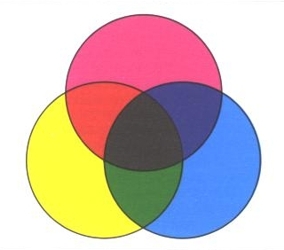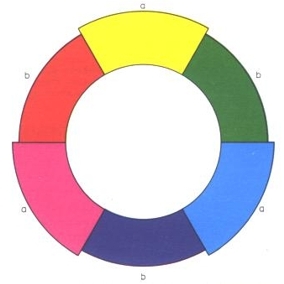|
| subtractive
colour mixing |
| |
 |
| |
| In
subtractive colour mixing the primary |
| colours
are yellow, magenta and cyan. |
| Subtractive
colour mixing occurs in mixing |
| paints
or pigments of different colours. The |
| three
primary colours together produce |
| black.
Yellow and blue produce green, etc. |
| In
principle one can, by mixing the three |
| primar
colours in different proportions of |
| intensity
(and by adding white), compose any |
| colour.
In subtractive colour mixing one |
| summons
actually the different absorptions |
| (light
substractions) of the various paints or |
| pigments. |
| Note
that the three primary colours in |
| subtractive
colour mixing are complementary |
| to
those of additive colour mixing. This can |
| also
be visualised in the so-called six colour |
| circle. |
| |
 |
| |
| Subtractive
mixing of two colours a produces |
| the
colour b between them. And additive |
| mixing
of two colours b produces the colour a |
| between
them. The colours opposite to each |
| other
are called complementary. |
|
|
| |